Uganda pursues a progressive and generous policy of refugee acceptance.
Long-term stay of refugees puts a strain on local resources, which can turn to be a threat to the community. JICA, along with the Ugandan government, is working to prevent a chain of threats by helping to realize a society where both refugees and the host community, through their own efforts, can co-exist in harmony with peace of mind.
It's hard to teach so many pupils!
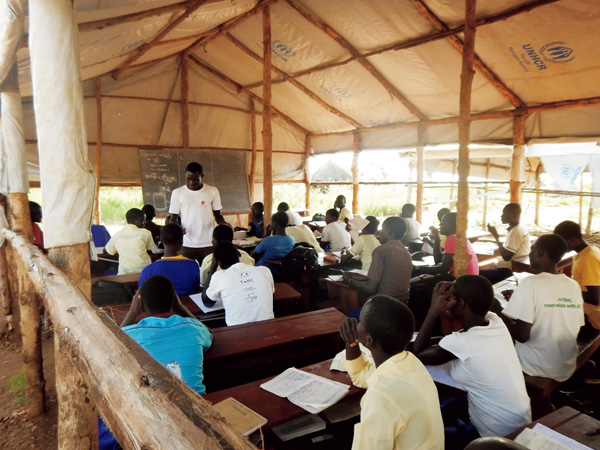
Issues raised by local communities
There were some frustrations amongst Ugandans that their lives are being impacted by refugees using health centers and schools in their residential areas.
Strife Between Refugees and Local Residents
Uganda is considered a country generous to refugees, recognizing their freedom of movement within the country and right to work. However, refugees moving into the West Nile sub-region of Uganda, in the northwest of the country, reached a total of 700,000 in 2016. This rapid influx has meant that the community infrastructure in refugee settlements has been unable to keep up, and the refugees are starting to use the schools, health facilities, water supply facilities and other public services outside the settlement where Ugandans live. As a result, Ugandans themselves are unable to utilize these public services fully, and the refugees, themselves subjected to threats, can be considered threats by the local communities and local governments, creating a chain of negativity.
Since 2009, KOMUKAI Eri, a Senior Advisor at JICA, has worked in northern Uganda, where 2 million internally displaced persons [1] have returned since 2009. Based on this experience she notes that, "In protracted refugee situations, it's important to work not just to ensure that these refugees can stand on their own two feet, but to work with the host community in the same way. It is also important to improve the capacities of local governments to provide public services and with support from the central government."
Note
- [1]In northern Uganda, which has been in a conflict for more than 20 years, about 2 million people have been internally displaced due to delayed development caused by cessation of social infrastructure investment.
Problems faced by Uganda
Delayed regional development
The West Nile sub-region, which hosts a large number of refugees, is less developed than other areas. There are many issues to be addressed, such as the maintenance of roads, bridges, and wells, and there is a need for cooperation to improve the capacity of the government to support and strengthen the lives of refugees and the region.
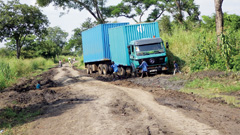
Unpaved roads make travel harder!
A Comprehensive Approach for the Refugee Hosting Region
Initially, there were not even maps that showed both refugee settlements and the administrative units of Uganda, making it impossible to grasp conditions of the local social infrastructure. JICA's first step, after collecting basic information such as population, was to carry out surveys to ascertain the situation, and create comprehensive data in sectors of education, health, water, roads, and bridges. Based on this integrated data, the central and local government officials, as well as international organizations, have been able to objectively determine the priority of projects. This objective justification of priorities of projects helps restore trust in the national and local governments. In terms of local community empowerment, the rice-growing training by JICA and local governments was attended by both Ugandans and refugees, both working to improve their livelihoods on their own.
Accepting refugees also causes a rapid increase in the consumption of local natural resources. For example, firewood and charcoal for fuel and lighting are sometimes taken by refugees from nearby forests. This prompted JICA to undertake a survey [2] 2 on comprehensive data for natural resource management in 2019, applying information communication technology (ICT) such as satellite images on forest and land use, and data analysis software, etc. The collected data is expected to reconcile sustainable natural resource management and people's livelihood, taking refugees into consideration in the planning of regional development.
Taking into account the lessons learned in northern Uganda, consideration for refugees is integrated in local government development planning, and an evidence-based approach to development planning is reflected in the national guidelines. In addition to the collaboration with humanitarian agencies, JICA's program is being expanded to other regions by financial assistance from international organizations.
Refusing to accept refugees could destabilize Uganda and the entire Great Lakes region when a conducive environment of return is not in place in their home country. With the "Human Security" perspective, JICA aims to build an environment where refugees and locals can coexist through empowering the capacities of all the stakeholders, namely the local residents, host communities, host local governments, and refugees themselves.
Note
- [2]Data Collection Survey on Sustainable Forest and Natural Resources Management in the West Nile Region
Actions to solve these issues
Improving the capacities of local government
In order to ensure good relations between refugees and local residents, it is important to implement projects in order of priority after assessing the needs objectively. The local government officials have learned how to effectively formulate development plans.
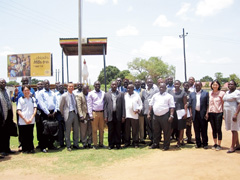
I learned how to formulate development plans!
Strengthen social cohesion by strengthening the region
Local residents are united to improve their livelihoods and strengthen their social cohesion, which will help to secure the livelihood of refugees. Local government officials often visit the community and build good relations with the residents.
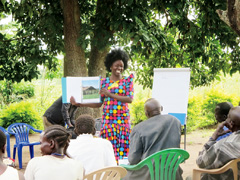
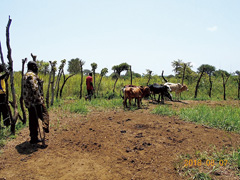
Adding cattle to farms run by host communities increases productivity and income.
Using data to make sense of the project
Projects are determined by deciding their priority based on the results of collecting and analyzing necessary information in the refugee settlements and host communities. Communicating this information helps build trust from the local communities in the administration.
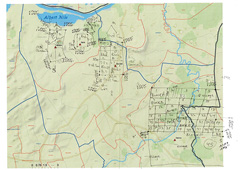
Map with required information added by hand
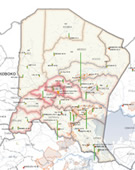
Map showing collated information such as population and health centers




scroll